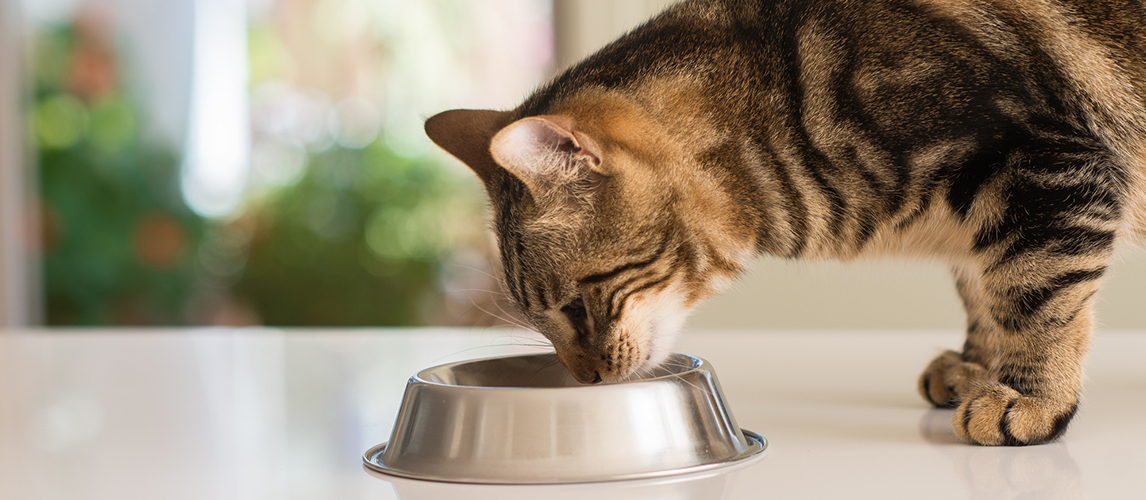Cats are amazing creatures that add a lot of joy and love to a family home; that is unless you discover that you or a family member are allergic to them. Cat allergies are far from fun and symptoms can range from hives to sneezing, coughing, and wheezing. For some, it is a minor irritation that can be controlled by keeping their face away from the cat in question. For others, it is debilitating, causing a constant runny, itchy nose and relentless redness and itching anywhere the cat has touched.

What Are Cat Allergies?
It is a common misconception that most cat allergies are caused by cat hair. It is actually one or more proteins that are secreted by cats that most people with cat allergies are reacting to. There are two proteins that are known to cause problems; Fel d1 and Fel d4. The Fel d1 protein is secreted by your cat’s skin and can also be found in their saliva. Fel d4 is primarily found in your cat’s saliva, although it is also secreted by the skin, but at much lower levels than Fed d1.
These two proteins cause the majority of the problems associated with cat allergies. However, dander, dust, mites, and fleas also cause allergic reactions in many individuals. One of the problems with cat allergies is that it is not always possible to narrow down the exact cause. However, by reducing dander through cleaning and regularly checking for flea infestations, you can reduce the number of potential causes.
What are Hypoallergenic Cats?
Thankfully, there are also cats that either produce much less of these proteins or whose skin and hair makeup mean they are less likely to cause allergic reactions in individuals who are susceptible to the proteins. These cats are considered hypoallergenic, although choosing one of them does not guarantee an allergen-free environment. If you love cats and what to enjoy their very unique antics in your home but often present with cat allergy symptoms when you are around felines, then we recommend that you consider one of the following cat breeds.
Sphynx
If the proteins in cat saliva are one of the main issues for you, then the sphynx could be the cat for you. The Sphynx is a hairless cat. This means that the proteins in their saliva have nothing to get trapped on. It also means there are no shedding issues. However, because they are hairless Sphynx cats have very specific care needs. These should be taken into account before you look to purchase this breed of cat.
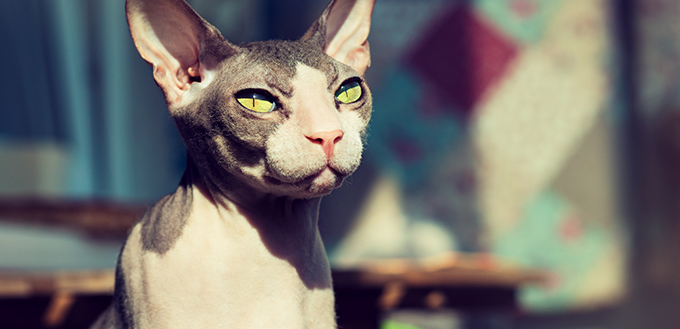
Cornish Rex
The Cornish Rex also has a unique coat that makes it ideal for cat allergy sufferers. Most cats have three fur layers – consisting of the guard hair at the top, the awn hair in the middle, and down hair at the bottom. The Cornish Rex, however, only has the undercoat layer of down hair. This makes them extremely soft coated and means they have a lot less hair than cats with traditionally layered coats. This, in turn, means they shed a lot less and less shedding means a lot fewer protein excretions being spread around your house and furniture.
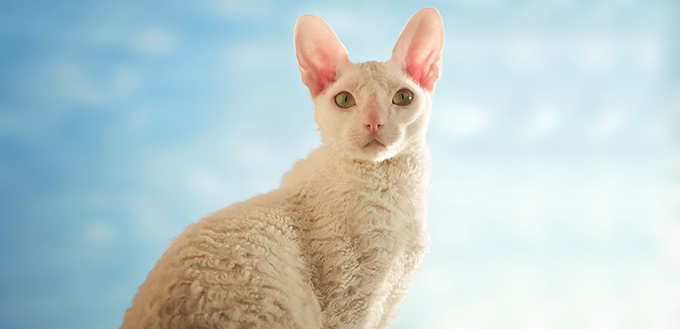
Devon Rex
The Devon Rex is very similar to the Cornish Rex. It too only has the bottom layer of down hair. However, the Devon Rex has even less hair than the Cornish Rex, meaning even less shedding and even less likelihood of an allergic reaction.
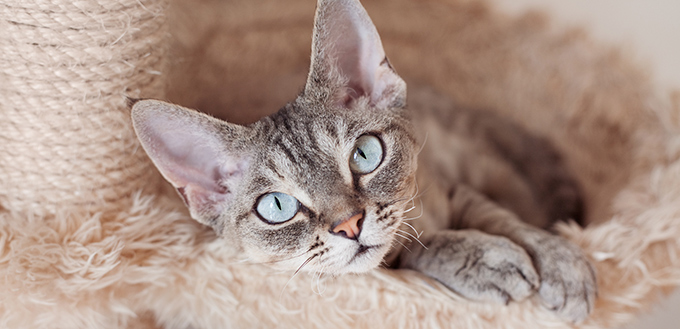
Oriental
While the Oriental has a more traditional layering of its coat, it is much shorter and finer than in many other breeds. Orientals shed very little and this can be reduced further with frequent brushing.
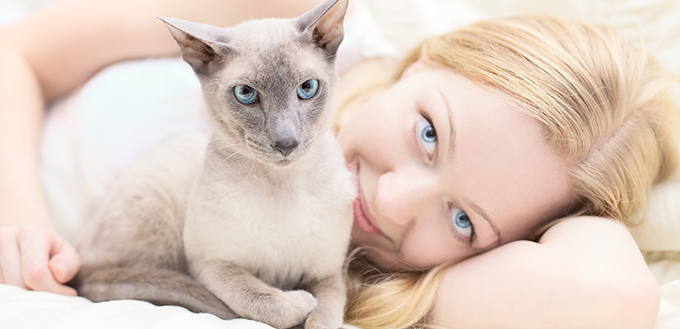
Russian Blue
The Russian Blue has a more typical coat type but produces much less of the Fel d1 protein that causes allergic reactions in those that are susceptible to cat allergies.
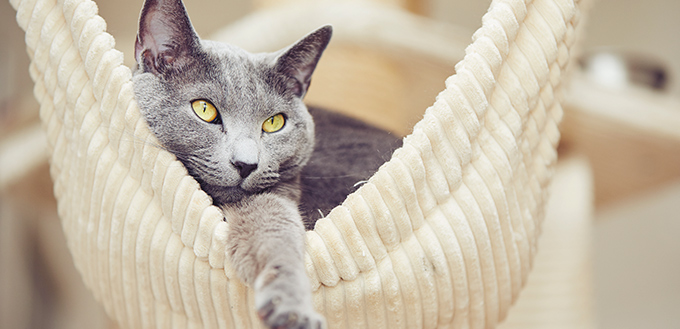
Balinese
The Balinese is another breed that produces less Fel d1 protein and is, therefore, less likely to cause an allergic reaction in sufferers.
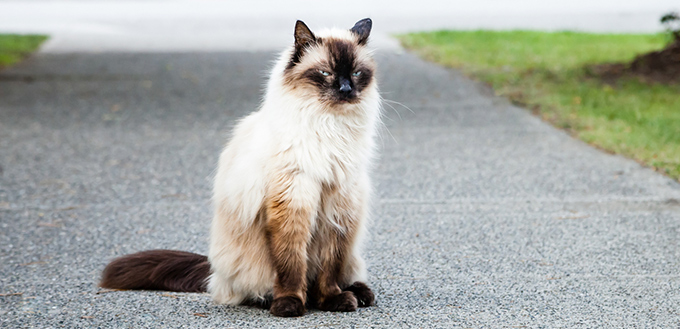
Siberian
Given its long, thick coat it can be hard to believe that the Siberian is suitable for cat allergy sufferers. However, like the Russian Blue and the Balinese, it produces lower levels of the Fel d1 protein. So, even though there is more hair for the protein to stick to, it is less likely than breeds with higher concentrations of Fel d1 to cause an allergic reaction.
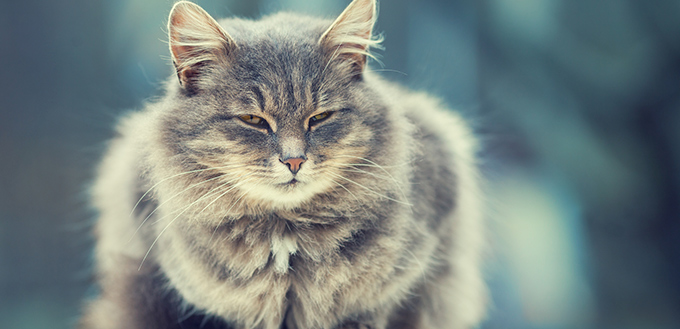
Javanese
The Javanese cat breed does not have an undercoat. Like other breeds with non-traditional coats, this means that there is less hair for the proteins that cause allergic reactions to stick to. It also means less shedding and therefore less dander, which can be another common allergen.
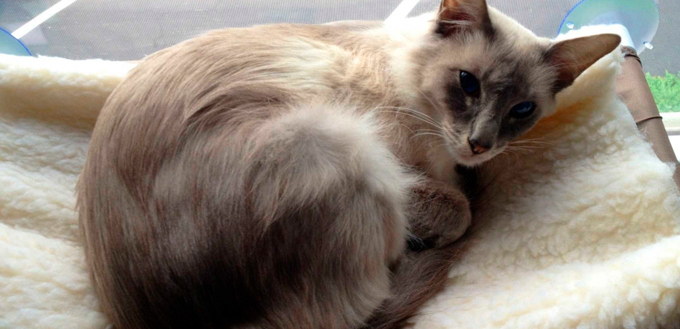
Other cats that are often considered to be suitable for individuals with cat allergies include the Bengal, Colorpoint Shorthair, Ocicat, Burmese, and Siamese breeds.
Other Ways to Reduce the Risk of Allergic Reaction
Regardless of the cat you choose, with the exception of the Sphynx, there will be some shedding, loose hair, and dry skin flakes to deal with. This means that there is always the possibility of the cat causing some degree of allergic reaction in you or a visitor. This risk can be reduced further by following the tips below:
- Antihistamines
Antihistamines provide relief from the symptoms of allergies, such as a runny nose, itchy eyes, sneezing, coughing, wheezing, and itchy skin. While they are not a long-term solution, they can help alleviate the worst of the symptoms while your body builds up a tolerance to the allergens. While it is not always the case that the body achieves this tolerance, most people do achieve some level of tolerance to cat allergens over time.
- Regular grooming
Regular brushing and deshedding of your cat help to reduce the amount of loose hair and dander flying around your house. It also means that you can check regularly of fleas that can also cause allergic reactions as well as encouraging your cat to scratch and spread hair across your house.
Related Post: Best Brush for Cats
- Regular bathing
This should be approached with caution and your success rate will depend on your cat’s temperament and the amount of help you have. However, if you can manage to bathe your cat at least once every six weeks, then this will certainly reduce the risk of allergic reactions. Use a specific cat shampoo and rinse them well. This will help remove dander, loose hairs, and saliva from their coat. For the best and safest results, start bathing your cat when they are small so that they get used to the idea. You can still have good outcomes with older cats, but more care may be needed.
- Regular cleaning
As well as keeping kitty groomed and bathed it is important to stay on top of your house cleaning. Keeping surfaces and carpets hair free greatly reduces the presence of allergens and therefore the risk of an allergic reaction. Carpets should be vacuumed regularly, with special attention paid to areas where your cat likes to lay or spend lots of time. Vacuuming soft furnishing, damp dusting surfaces, and washing pet beds and toys can also all help to reduce allergens.
- Air purifiers
An air purifier can help reduce allergens in the home. Such purifiers remove impurities from the air. High-quality air purifiers are not particularly cheap, but they can be very effective. It is a good idea to shop around and check that the one you are considering is good for pet hair.
Following these tips along with choosing a cat that is considered hypoallergenic reduces the risk of you or your family having an allergic reaction to your beloved pet. It is worth reiterating that in most cases the human body builds up a tolerance to the allergens and the problems reduce or disappear completely. Where this does not happen, it is worth visiting your doctor to make sure there is nothing untoward going on. In the meantime, it is worth keeping your furry feline away from your face and introducing them to a brush and a bath as soon as possible.
Sources:
- Julia Satorina, Do Hypoallergenic Cats Exist? — Determination Of Major Cat Allergen Fel D 1 Production In Normal And Hypoallergenic Cat Breeds, Springer
- Richard F. Lockey, The Myth Of Hypoallergenic Dogs (and Cats), Elsevier



